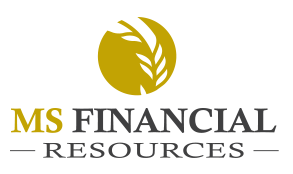I was at a Holiday Party earlier this month and someone (who’s not in the financial industry) mentioned buying I-bonds to me. It caught me off guard and I had all sorts of questions coming to mind. Admittedly, I-bonds haven’t been on my radar and when I asked 5 or 6 other financial professionals, it wasn’t on theirs either. I’ve been reading and learning more about them though and thought this is definitely worth sharing.
The basics of I-bonds: They are inflation-protected savings bonds issued and backed by the US Treasury. Due to recently high inflation, there has been a surge of interest and people purchasing I bonds. According to Treasury Direct, if you purchase one between now and April 2022, you will yield an annualized rate of 7.12% over the next 6 months. Note: That means that you earn 3.56% for the first 6 months you own the bond and then, if the rate stays the same, you’d earn another 3.56% over the next 6 months. The rate could go up or down though. It is re-set every May and November based on inflation. When inflation runs high (as we’re seeing now), they generally yield more than when inflation is low.
Although I bonds have a 30-year maturity date, you do not have to hold them for 30 years. You do need to hold them for at least 1 year but if you decide to hold it longer, it continues to grow and earn compound interest, tax-deferred. If or when you decide to cash out, then you pay Federal tax (no state) on the gains. If you cash out an I bond out before 5 years, you will lose 3 months worth of interest (similar to how many CDs function).
The downsides: You cannot buy I bonds through me or Schwab. You simply go to Treasury Direct, open an account, and purchase I Bonds there. Here’s the link.
There used to be higher maximums on how much you could buy but now you can only purchase up to $10,000 per calendar year through Treasury Direct and another $5,000 in paper bonds using your Federal Income Tax Refund – This means you have to overpay taxes throughout the year and have a refund coming for the $5000 paper bonds. If you know you have a refund and you’d like to purchase I bonds with it, let your CPA know!
If you want to take advantage of the annualized rate of 7.12% over the next 6 months and maximize dollars in I-bonds, you could do $10,000 before 2021 Calendar year-end and then do another $10,000 after the New Year. If you are married filing jointly, there’s a max of $25,000 per couple per calendar year. $10,000 per spouse plus the additional $5,000 paper I bonds through Federal Tax Refund.
Lastly, the US Treasury will not send you a 1099-Int for your taxes. When or if you cash them out, you’ll need to be sure to report the interest which can be found through your Treasury Direct account. The onus is on you to keep track of this account and to make sure your spouse and heirs are aware of it too!
If you have additional questions about I bonds, feel free to call me or here are some resources that I found helpful as well: Treasury Direct: www.aarp.org/money/investing/info-2021/why-buy-i-bonds.html…they have a great Q/A section as soon as you click the link. AARP: www.aarp.org/money/investing/info-2021/why-buy-i-bonds.html NY Times: www.nytimes.com/2021/11/03/your-money/series-i-bonds-inflation-rate.html

